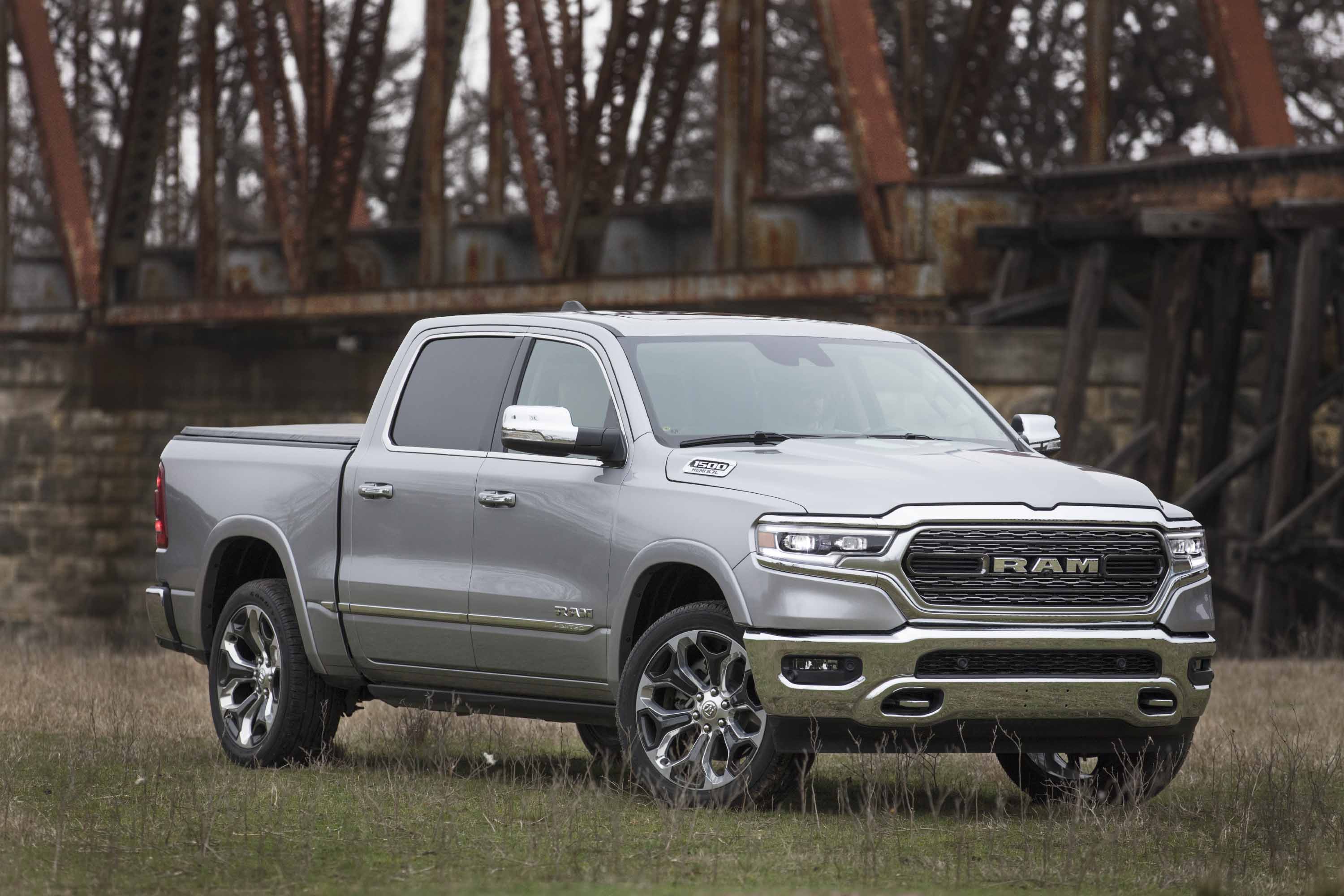
There’s hardly a feature you won’t find on the 2020 Ram 1500 option list, but prices climb quickly. We give it 7 out of 10 here. (Read more about how we rate cars.)
The 2020 Ram comes in a variety of trims, two body styles, two bed lengths, four engine variants, and two drivetrains, so there’s likely a truck for any buyer.
Base Tradesman models are work-oriented and feature cloth seats, a front bench seat option, hard plastics, and minimal styling elements. Most non-commercial buyers will step up to the Big Horn (or Lone Star, for those in Texas), which includes chrome bumpers, 18-inch wheels, and a 5.0-inch touchscreen infotainment system, but spend more for the optional 8.4-inch unit, which includes Apple CarPlay, Android Auto, and some of our favorite automaker-supplied infotainment software.
Laramie models are a significant step up, with heated and cooled leather seats, a 7.0-inch gauge cluster information screen, the 8.4-inch infotainment screen as standard, and more. The Laramie wants for little, but does come in at nearly $49,000 for a four-wheel-drive V-8 model. Compared to other top-tier trucks though, it’s a relative bargain.
The Laramie Longhorn and Limited trims occupy the top spot in the Ram range, and both include semi-aniline leather, real wood trim, 20-inch wheels, and LED headlights. The huge 12.0-inch screen comes standard on the Limited along with power running boards, and for those who want a true Western-themed truck, the Laramie Longhorn offers some unique styling elements.
The Rebel trim slots between the Laramie and the Laramie Longhorn trims in terms of price, and include raised suspension, black plastic body cladding with a unique grille and graphics, two-tone paint options, an electronic locking rear differential, and standard four-wheel-drive.
As for the available engines, think twice about paying more for the diesel. It costs $4,995, which might take six years to earn back in savings. It also factors into what might be the most expensive Ram 1500, a Limited EcoDiesel that approaches $75,000. The eTorque setup costs $1,450 extra—but the EPA says even that will take more than five years to pay back.
Review continues below
0 Kommentarer